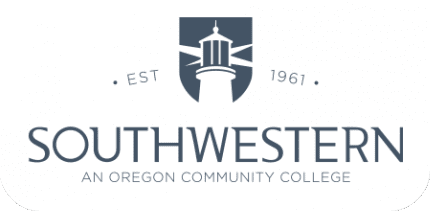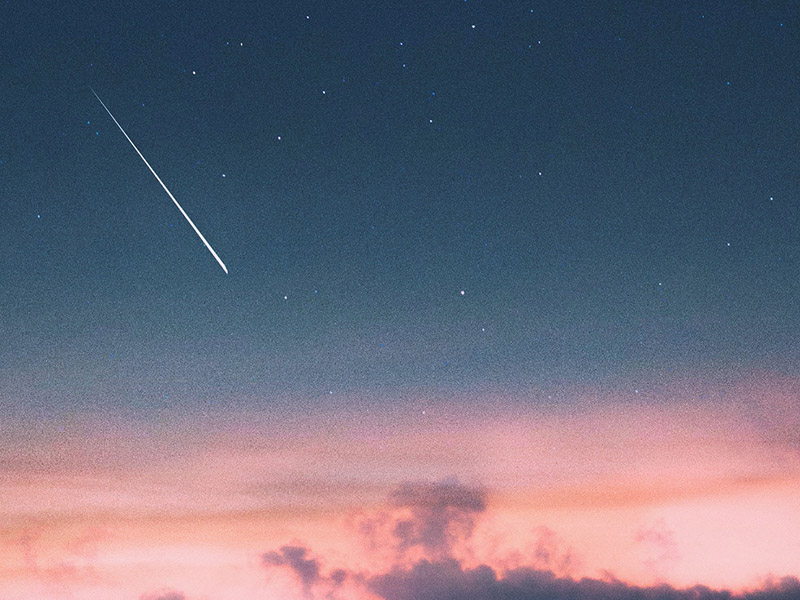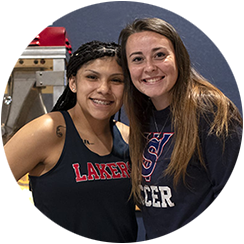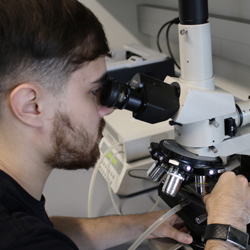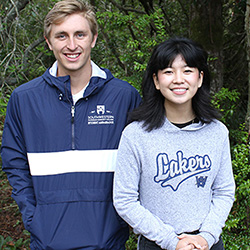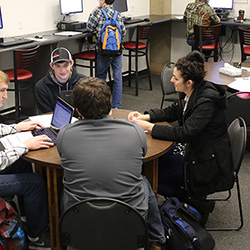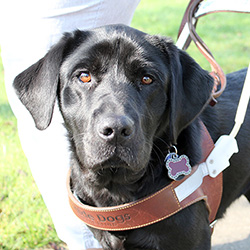Courtesy of The World Newspaper – Jillian Ward
COOS COUNTY – Students at Southwestern Oregon Community College are on the lookout for both asteroids and micrometeorites.
Dr. Aaron Coyner, associate professor of physics at SWOCC, has students participating in two new projects. The first is Project Stardust, which is searching for micrometeorites in Coos County.
“Meteorites are fragments of space debris that reach the ground and micrometeorites are much smaller,” Coyner explained. “They are essentially microscopic, similar to sand grands but slightly bigger, spherical and made largely of iron, nickel and other (metals)….”
Project Stardust got started when one of Coyner’s students, Ethyn Killinger, entered a program through the local Oregon NASA Space Grant Consortium. The program, SCOAR, is conducting research into micrometeorites in the area to find and classify them.
Coyner, volunteer researcher Krystal Hopper, and three to four students have formed a team to help with the project. One of these students also attends North Bend High School.
“We are creating collectors using designs given to me by a colleague at Oregon Coast Community College … to collect these micrometeorites from storm drains, downspouts and flat rooftops,” Coyner said. “…The experts in the field have said there is one micrometeorite per square meter that hits the planet every year.”
Coyner hopes the team can find these micrometeorites on flat rooftops or those that have been washed into downspouts and then extract them using a specialized magnet. From there, students will analyze them in a lab where the micrometeorites are cleaned up and analyzed under a microscope. They will be compared to ones that have been previously discovered.
“…We’re building this out so it’s a research project for one of my students but is a team effort and may evolve into a citizen science project as we move forward,” Coyner said.
Coyner said that Killinger has done research into the subject and helped identify local sites where the team will begin collecting samples. They plan on starting next week.
“We expect that our initial findings will be completed by the end of April or the first part of May because (Killinger) has to write a report by the middle of May,” Coyner said.
Looking for asteroids
The second project that Coyner’s students have started working on is the Coastal Oregon Asteroid Search Team. It is an international collaboration known as the International Asteroid Search Campaign run out of a university in Texas.
“We have special software that (the International Asteroid Search Campaign) gave us that allows us to look at images taken by Panstar’s telescope in Hawaii and look through successive frames … for asteroids and other small bodies…,” Coyner said.
The goal is to identify near-earth asteroids that may not have been seen before.
There is a total of 94 teams across the world participating in the project. Coyner said many are in India, with a few from the Middle East and South America. There are only six to seven teams in the United States and “we are one of those teams,” he said.
“(Hopper) and I heard about (the project) when we had gone to a space grant meeting a couple years ago and I had a student interested in doing astronomy data analysis,” he remembered. “I thought it would be a good project to get started but the original idea morphed.”
He turned it into a team project as a way to get students to get experience working with telescope observations and get used to the computer image processing used with the data.
“It struck me as a good learning experience and a good research project to start without having to worry about buying tons of new science equipment,” he said. “It’s something we can do with the computers at SWOCC and that students have themselves.”
In addition, the project fit in well with the current COVID restrictions that have kept students away from in-person classes.
“It’s not something that has to be done physically in a lab,” he said. “You can do this wherever you are.”
So far, he said students have been enjoying it. Though some students are “slightly overwhelmed” as they juggle online school, Coyner said “this is a fun educational break from some of the chaos that has been Zoom classes.”
He asks that if anyone in the area is interested in having the Project Stardust team do micrometeorite collection at their businesses, email him at aaron.coyner@socc.edu or Hopper at physics-engineering@socc.edu. “We’re always grateful for community support,” he said.
To learn more about physics and engineering degrees at Southwestern visit: https://physics.socc.edu/.
